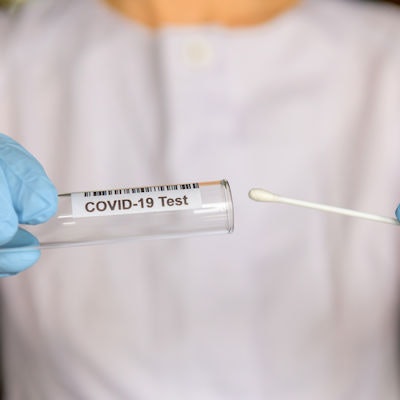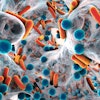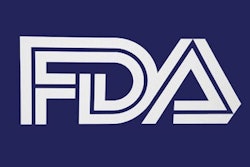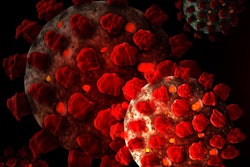
Testing oropharyngeal secretions for SARS-CoV-2 resulted in fewer false-negative results among patients who seemed to have recovered from the infection, compared with nasal-sample testing, according to a study published on July 2 in the Journal of Dental Research.
Although using oropharyngeal secretions improved nucleic acid amplification testing for the novel coronavirus, it should only be considered a surrogate for potential transmissibility. Cultures of diseases that spread through aerosols such as SARS-CoV-2 can only be tested accurately in a biosafety level 3 microbiology laboratory, according to the authors. Dentists, like those in North Carolina, who were given the greenlight to administer tests that detect COVID-19, may want to consider the type of test they choose to use.
"Detection of viral RNA from a patient's secretions is not confirmative of viral infectivity," wrote the authors, led by Jingzhi Ma, DDS, PhD, of Huazhong University of Science and Technology in Wuhan, China.
A continuing threat to public health
Worldwide, there have been more than 11.5 million confirmed cases of COVID-19, including about 536,000, deaths reported to the World Health Organization. In addition to recent surges in countries including the U.S., officials must also contend with those patients who have seemingly recovered from the virus and been discharged from hospitals only to test positive again later.
Recurrent positive cases impede medical communities, health departments, and governing officials from managing COVID-19 effectively. Relatively high rates of false-negative results obtained from nucleic acid amplification testing via reverse transcription polymerase chain reaction tests, which have sensitivity levels of 66% to 80%, may partially contribute to the issue.
The accuracy of nucleic acid amplification testing is crucial for determining whether an individual should be discharged; a patient must obtain two negative results from this type of testing performed 24 hours apart before he or she can be discharged. Recent evidence has shown that more SARS-CoV-2 can be found in oropharyngeal than in nasopharynx secretions, so the authors opted to compare the two methods performed in nucleic acid amplification testing.
The first study included 75 COVID-19 patients who were set to be discharged and tested negative using two consecutive nucleic acid amplification tests of viral samples retrieved with nasopharyngeal swabs. Potential false-negatives were detected in the first group, so oropharyngeal secretion and nasopharynx secretion samples were collected from 50 additional COVID-19 recruits who were in recovery for a second prospective study. The researchers compared the diagnostic value of the two viral RNA sampling methods.
Oropharyngeal secretions obtained from two of the 75 subjects in the first study yielded positive results for SARS-CoV-2. In the second study, oropharyngeal secretion samples were significantly more sensitive for detecting the virus than samples taken from the nose. Samples taken from the throat missed only 14% of positive cases, whereas those taken from the nose missed 59%, according to the authors.
A link in the chain
The study was not without limitations, including measurement of the specificity of tests. Also known as the true-negative rate, specificity refers to the proportion of actual negatives that are correctly identified as testing negative for a disease. Nucleic acid detection of SARS-CoV-2, which currently is not available, is necessary to express specificity accurately. Also, the study had a small sample size, they wrote.
"Results of the present study are supportive of the notion that [oropharyngeal secretion] sampling improves the accuracy of SARS-CoV-2 nucleic acid testing," the authors concluded.




















